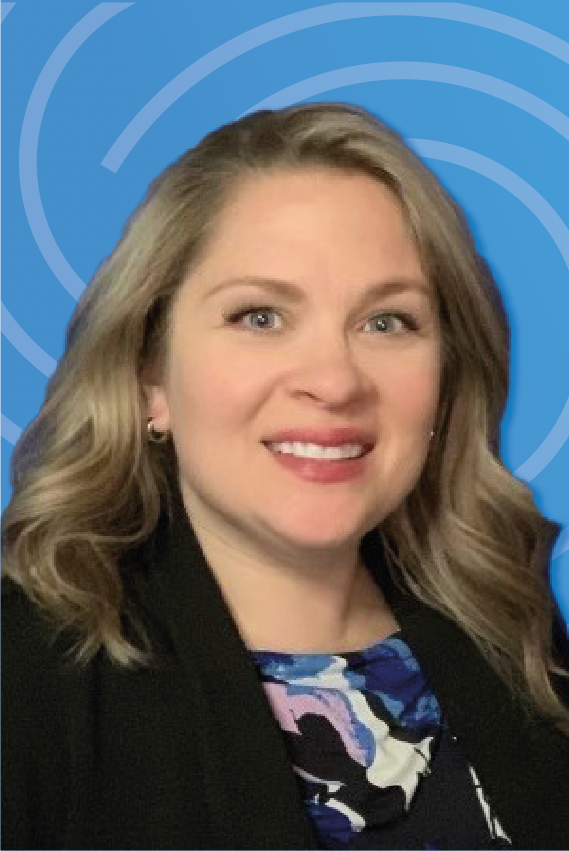Vision and Mission
Topics
- Purpose
- Vision
- Mission
- Strategies


Objectives
- Make the purpose of your organisation clear
- Learn what makes vision and mission statements good
- Analyse already existing vision and mission statements, strategies
- Make sure the organisation’s strategies work for the purpose and goals of the organisation

Definitions
Documented: Written down; typed; videotaped; proof
Identity: Who you are
Mission: What you want to do
Purpose: The reason, the goal
Shared values: Beliefs and goals that are shared by the full group
Social change: Change in society values, beliefs and customs
Strategies: How you will achieve your goals; plans and steps
Sub-goals: Goals that will help the big goal
Vision: The picture of your community in the future; what you are trying to build/achieve
Ambiguity: The quality of being open to more than one interpretation; inexactness
Introduction
This module focuses on exploring the purpose of the deaf organization. To examine the purpose of the deaf organization, it is very important to review and reflect on the vision, mission and strategies of the organization.
The purpose of an organization is why it exists and its impact on people’s lives. The creation of an organization happens when a group of people that comes together with the same goals. The organization becomes a community coordination and formal representation for the group of people with common interests and needs who need space to create activities that help achieve goals. With an organization, it becomes easier for a group of people to develop a relationship with the government and NGOs to create solutions to address their needs.
The common purposes of many deaf organizations are:
- Important role in improving the situation of deaf people
- Promote social change and to create a better environment
- Acts as a pressure group with the government to defend human rights and encourage policy changes
- Come together to share ideas and create solutions
An organization’s identity can be reflected through its vision and mission. A vision statement should summarize the organization’s purpose which is the shared values amongst the organization members. The vision is what an organization would like to happen as a result of the action that it does. The vision is the reason for the establishment and existence of the organization. The vision concentrates on the future and is a source of inspiration for the organization’s work. The vision provides clear decision-making criteria for the organization.
Features of an effective vision statement include:
- Clarity and lack of ambiguity
- Vivid and clear picture
- Description of a bright future
- Memorable and engaging wording
- Realistic aspirations
- Alignment with organizational values and culture
A mission statement summarizes how the organization plans to achieve the vision and clarifies their purpose as an organization and motivates people to become involved. A mission is what an organization does and its action.
Mission equals the action; vision is the ultimate result of the action.
It is important for an organization to take the time to create the vision and mission statements together using different perspectives. They should be easily understood by people outside of the organization and used in marketing materials. The vision and mission statements can be expressed and documented in different ways; written declarations, video clips, and shared amongst the members of the organization and outside of the organization as well.
Leaders in the association must know and understand the mission or vision of the association. Only then can they lead the members to achieve the aim.
All organizations should strive to ensure that the organization’s vision and mission are documented in writing, are known, and accepted by all members and staff and have been spread outside of the organization. It is important that all within the organization knows that the vision and mission exist and continually aim to ensure that the vision and mission are being achieved through the organization’s strategies. Many people often confuse the vision statement with the mission statement. Vision is the WHAT of the organization’s purpose and mission is the HOW of the organization plans to achieve its vision.
Organization’s strategies reflect how the board and members of the organization intend to achieve the vision and mission of the organization. Strategies are the “course of action” that the organization will take to realize the vision. Some of the strategies are in the form of activities and programmes and others are in the form of advocacy work, presentations, awareness raising, training and many more. A good organization has written strategies paired with sub-goals that are linked to the organization’s vision and has been discussed and approved by the members of the organization.
A good strategy answers the WHY? This and that activity will help the organization arrive at the organization’s vision.
Writing your own vision, mission, strategy, and purpose
Vision
Vision is a one sentence statement describing the clear and inspirational long-term change, resulting from your work. You should consider what is your organization’s vision. Vision statement is a description of what the ideal world you wish to achieve looks like if you fulfill your mission. It is intended to guide decisions for choosing current and future courses of action. A clear vision statement is important because it connects to your strategic plan and guides your organization in choosing what will you do when writing a strategic plan. You should make sure that working methods and how you work should be in line with your vision. Activities you carry in your organization should be included in vision. You should be able to clearly define your target group(s). Does your organization know which target group(s) you are working for and with?
Your organization’s vision should include:
- Belief, example: “FSL is the natural language of the deaf”
- What your organization plans to achieve, example: “Accessible education for the deaf”
Should answer the following question:
- What do you want to achieve? Example: “Deaf Filipinos will have equal rights in the society”
- What do you see in the future? Example: “Education will be accessible to all deaf Filipinos”
Example of organizational vision
PFD: “Filipino Sign Language and deaf culture will be internationally recognized and the Deaf Community will have equal rights and full participation in the Philippine society.”
Mission
Your organization’s mission should include:
- Identity, example: Deaf, hard of hearing, where are you from – “deaf Manilenos, deaf Boholanos, deaf in Cotobato”
- Belief, example: “FSL is the natural language of the deaf”
- Purpose, example: “To train deaf in leadership”
- Goals and Objectives, example: “FSL will be recognized as national language of the deaf”
Should answer the following questions:
- What is your organisation’s identity?
- Deaf? Hard of hearing?
- Deaf from a certain place?
- Who or what do we serve?
- Deaf?
- Hard of hearing?
- Deaf in certain place?
- Parents of deaf children?
- What does your organization do?
- Train leaders?
- Advocate for human rights?
- Serve the Deaf Community?
- Why do you do it?
- To empower the deaf leaders?
- For equality?
- For employment?
Example of Organization Mission
PFD: “To represent deaf Filipinos, preserve Filipino Sign Language, and empower the Deaf Community through capacity building training of deaf and hard of hearing Filipinos to ensure their equal human, legal, linguistic, and cultural rights.”
DOs and DON’Ts when writing down the Purpose, Vision, Mission, and Statements
| DO | DON’T |
|
|
Facilitator’s guide

Tips
Ensure materials are provided in accessible formats for all participants. There should be enough space for participants to be seated with chairs and tables in a semicircle.

Suggested Activities
Activity 1
Each participant picks one organization and answer the below four questions:
- What is your organization’s purpose?
- What is your organization’s vision?
- What is your organization’s mission?
- What is your organization’s strategy?
Once the participants are done with answering the above four questions, each one of them takes turn to stand in front of the group and display his/her answers via a data projector so that everyone in the class can clearly see the answers to all the four questions. In case there is no data projector, a large piece of paper (preferably a flip board sheet) would be possible.
Activity 2: Matching vision-mission statement
This activity aims to help the deaf participants understand the difference between vision and mission statements. The challenge is to correctly guess which statement is a vision one or a mission one.
- To create economic opportunity for every member of the global workforce.
- To connect the world’s professionals to make them more productive and successful.
- Which one of the following statement is a vision?
- Which one of the following statement is a mission?
Tesla
- To accelerate the world’s transition to sustainable energy.
- To create the most compelling car company of the 21st century by driving the world’s transition to electric vehicles.
- Which one of the following statement is a vision?
- Which one of the following statement is a mission?
eBay
- Provide a global online marketplace where practically anyone can trade practically anything, enabling economic opportunity around the world.
- Commerce being one that is enabled by people, powered by technology, and open to everyone.
- Which one of the following statement is a vision?
- Which one of the following statement is a mission?
Activity 3: Complete the missing vision, mission, and three objectives
This activity aims to involve deaf participants in writing – in their own words – statements about vision, mission, and objective statements for an imaginary case. This activity is an opportunity for the deaf participants to demonstrate their understanding of how to produce such statements and, indeed, a good opportunity for them to be prepared when writing such statements for their own organizations.
Imaginary Case 1:
Mr. Rajay, a father of three deaf children, is concerned about his future. He is seriously thinking about opening a vocational training center. He wants to approach his local government for financial support but he needs to write down a proposal. Let’s help him produce a project proposal. We need to think of a good name for his organization. What would be the vision? Mission? Three objectives?
Imaginary Case 2:
Ms. Muna is deaf and she has only completed her basic education and was not given an opportunity to continue her education. Like many other deaf women, she faced discrimination and prejudice. She was lucky to have found her skills and managed to find a job. She is very concerned about the plight of many deaf women living in her area as they were seriously lacking knowledge of basic human rights, independent living and working skills. She is thinking about opening a society to train and empower deaf women. Let’s help her write down a statement about her future organization. She needs to present a proposal to the local authorities and sponsors to materialize her dream. What would be the name of the organization? Vision? Mission and three objectives?
Imaginary Case 3:
Both Michael, who is deaf, and Beth, who is hearing, are thinking about opening a private consultancy business to provide support and resources to deaf communities in developing countries. Both of them are qualified and have the necessary resources to do the work. They need to come up with a name of an organization and what their vision and mission statements would be plus three objectives.
Note: The facilitator will divide the participants in three groups, regardless of how many participants there are. The leader of each three groups will randomly select a card. Each card holds a summary of an imaginary case (see above). The minimum number of Deaf persons in each group should be three and the maximum is ten. Each team has 45 minutes to complete the task. Each team will produce answers on a large sheet of paper and will be displayed on the wall (or flip board) for group discussion.
Group discussion: The facilitator will guide through the discussion to give each team an opportunity to “cross-examine” other teams’ work. For example, Team A will review Team B’s work, and Team C review Team A’s work and Team B review Team C’s work. For each team, the facilitator will ask questions:
- Is the vision statement clear? If not, why?
- Is the mission statement clear? If not, why?
- Do the objectives are clear and in line with both the vision and mission? And why?
The facilitator will give the teams an additional fifteen minutes for them to adjust any vision or mission or objective statements that need improvement. Once done, each team will have up to five minutes to show their work.

Possible discussion questions
- What is the purpose of your organization?
- Does your organization have a vision? Does it exist? Is it documented? Is it known among the members? Is it known outside of the organization?
- Is the organization’s vision clear? Does it make sense? Is it aligned with the group of people/members’ shared values and common interests and needs?
- Does your organization have a mission? Does it exist? Is it documented? Is it known among the members? Is it known outside of the organization? Is your mission statement linked to the vision?
- Does your organization have strategies? Do your strategies explain how to achieve your organization’s vision/mission?
- Are the strategies documented? How are they documented?
- Was the vision, mission and strategies developed and approved by a group of people and/or members of the organization using different ideas and perspectives of a variety of individuals?

Further Readings and Resources

Case studies
World Federation of the Deaf
Vision: Human rights for deaf people including recognition of sign language in all aspects of life.
Mission: The WFD works for the realisation of deaf people’s human rights in partnership with the United Nations and its agencies, national organisations of deaf people, and relevant stakeholders.
South African National Deaf Association
Vision: Empowered deaf people with equal opportunities and acknowledgement in a South Africa accessible to all
Mission: To serve as an innovative, responsive and dynamic developmental deaf organisation that consistently ensures the protection and promotion of the rights, needs and concerns of deaf people in South Africa.
Nepal Association of the Hard of Hearing
Vision: Hard of hearing people of Nepal enjoying dignified life in an equitable society.
Mission: To organize and build capacity of hard of hearing people so that they are empowered to claim and utilize their rights.
Nigerian National Association of the Deaf
Vision: NNAD vision is of an inclusive society where the deafs are fully integrated, with equality of opportunity and participation. It is our role to make this vision a reality by promoting the equal rights for the deaf and enhancing their life opportunities
Mission: To improve the welfare, promote inclusion and well-being of deaf people across Nigeria
Tanzania Association of the Deaf
Vision: To have an empowered and well informed deaf community and a Tanzania community which has a conducive and supportive environment for deaf people to access and enjoy their rights, fulfill their potential and be productive members of the society.
Mission: To advance and promote access to all human and citizenship rights among deaf community in Tanzania, and to advocate for reduction and alleviation of all barriers constraining their access and engagement of those rights, so that deaf people can realise their full potentials, improve their quality of life and be full productive members of the society.
Singapore Association for the Deaf
Vision: To be the leading organisation in advocating equal opportunity, in all aspects, for the deaf and supporting the deaf to reach their full potential.
Mission: To assist the deaf to achieve a better quality of life and to enable them to integrate and contribute to society.
National Federation of the Deaf Nepal
Vision: Strengthened deaf network: dignified deaf community with self-identity and rights
Mission: To empower the deaf community through advocacy, network development, and capacity building.

Downloads
Authors
This module has been developed by

Sarah Houge
Author

Megan Youngs
Author

Veera Elonen Knudsen
Editor

Kasper Bergmann
Editor
